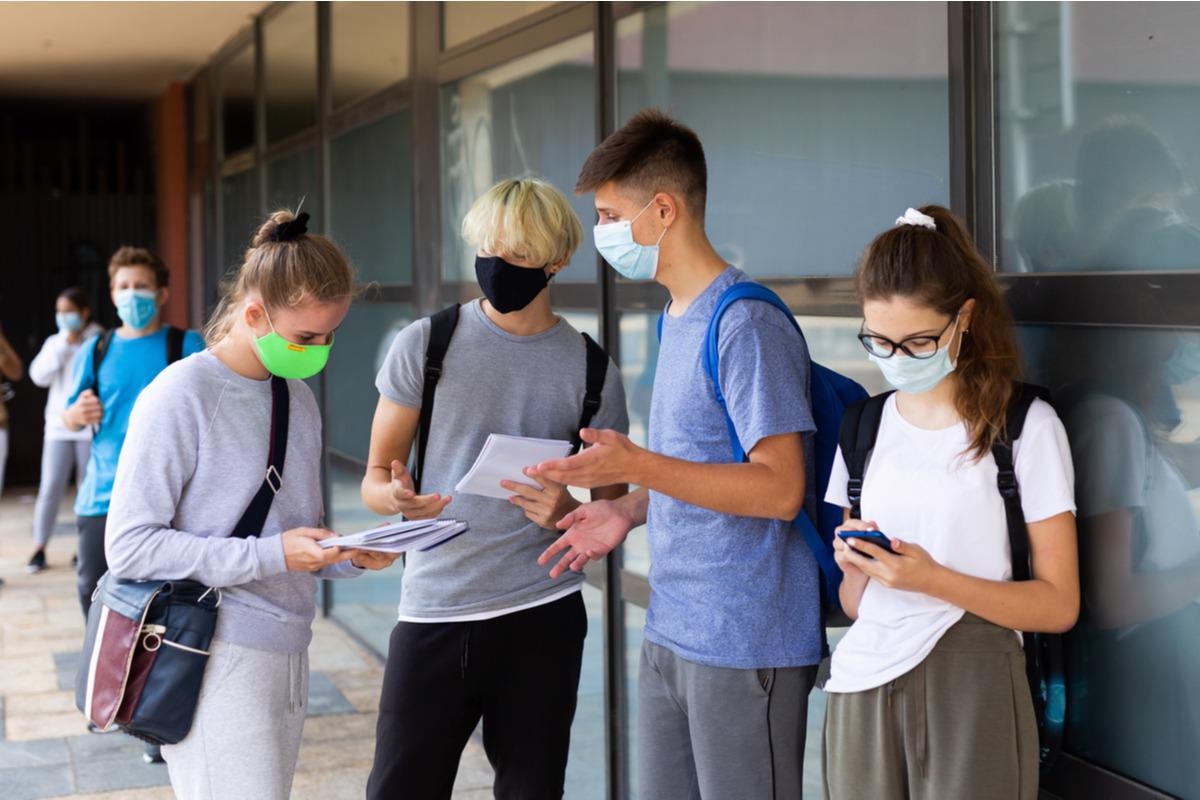Study considers factors contributing to health-related quality of life in adolescents during the COVID-19 pandemic
Coronavirus 2019 (COVID-19) outbreaks happen quickly, leading to an increase in worldwide morbidity and mortality. As a result, the global population is dealing with the pandemic's influence on nearly every facet of day-to-day, including isolation, social distancing, and altered routines.

Health-related quality of life (HRQoL) is an assessment of an individual’s or group’s perception of physical and mental health, in the context of internal views and external factors.
In both physical and psychological health, quality of life (QoL) is an important outcome metric. The importance of QoL measurements in addressing adolescent health has been recognized in the study literature. Stressful situations, such as times of war or pandemics, can damage one's quality of life. Indeed, during the COVID-19 pandemic, global studies reported a decline in QoL, with higher levels of distress and lower QoL among women and those in poor health.
In a recent study published in the International Journal of Environmental Research and Public Health, a duo of researchers from the University of Jerusalem investigated the HRQoL of adolescents before and during the pandemic. The study included 84 stereotypically developed adolescents between the ages of 13 and 18 who were recruited before the pandemic and 64 individuals during the worldwide outbreak in March to April 2020. The Pediatric Quality of Life Inventory, Sense of Coherence Scale, and Children's Hope Scale were all completed by the participants.
Study measurement and test procedures
The Pediatric Quality of Life Inventory Version 4.0 (PedsQL) is a self-report general HRQoL measure for adolescents aged 13–18 years old. It consists of 23 items on a 5-point scale ranging from 0 ("never") to 4 ("almost always") that rate the degree of difficulty performing an action. To produce a health profile in four domains: physical, emotional, social, and school-related, the items were inverted, totaled, and transformed to a 0–100 subscale.
A psychosocial health summary score is also generated using the last three subscales, with the overall score depending on the four subscales. Higher HRQoL and less challenges are associated with increased measures. The Sense of Coherence Scale-Short Version is a 14-item self-report that assesses one's sense of coherence. Adolescents were asked to score the things on a scale of one to seven, with one being "never" and seven being "always."
The total score was calculated by adding all of the items together; higher scores indicate a greater sense of cohesion. The Children's Hope Scale is based on a self-report of six items that represent goal-directed and process-related thinking, and it measures signs of hope. Adolescents use a 6-point Likert scale to rate how often they think or perform things, ranging from 1 ("never") to 6 ("always"). Higher cumulative mean scores imply a higher level of hope.
Results
The authors performed MANOVA analysis of the scores from the PedsQL, which revealed significant differences among the groups. The data from each measure was subjected to univariate analyses to investigate the basis of the disparity. This post-examination found that throughout the COVID-19 pandemic, adolescents had substantially greater scores for the physical HRQoL and substantially lower scores for the school HRQoL than before.
There were no significant differences between groups when the psychological HRQoL scale and the PedsQL total score were compared. However, during the pandemic, the mean scores of these measures were lower than before. The sense of coherence (SOC) measure revealed a significant group effect; adolescents pre-COVID-19 had a lower SOC score than adolescents during COVID-19. On the Hope Scale, however, there was no significant change between the pre-COVID-19 and COVID-19 groups.
Except for a non-significant link between physical subscales of the PedsQL and SOC scale, the correlation analysis revealed substantial, moderate correlations between total scores and subscales of the PedsQL, SOC, and Hope Scales in both groups. Except for the correlations between physical HRQoL and SOC, there was no significant difference between pre-COVID-19 and COVID-19 correlations. Significant findings were found in a regression analysis that explained the PedsQL overall score with demographic variables, resilience factors, and before or during COVID-19 pandemic groups as predictors.
Implications
During the pandemic, healthy adolescents reported worse HRQoL, particularly school-related HRQoL; a higher SOC than before the pandemic; and no difference in hope levels across the research groups. Increased SOC and hope were linked to higher HRQoL scores overall.
These findings support the recent COVID-19-inspired trend of looking for solutions to help people respond to the current stressful environment and respond to a change in circumstances. Hope and SOC, according to the data, play a significant role in influencing an adolescent's health outcomes. Given the importance of assisting a person's development, it makes sense to promote awareness of these resilience aspects and to tackle them in educational and therapeutic interactions and activities with adolescents.
Tal-Saban, M., & Zaguri-Vittenberg, S. (2022). Adolescents and Resilience: Factors Contributing to Health-Related Quality of Life during the COVID-19 Pandemic. International Journal of Environmental Research and Public Health. doi: https://doi.org/10.3390/ijerph19063157 https://www.mdpi.com/1660-4601/19/6/3157/htm
Posted in: Medical Science News | Medical Research News | Disease/Infection News
Tags: Adolescent Health, Adolescents, Children, Coronavirus, Coronavirus Disease COVID-19, covid-19, Mental Health, Mortality, Pandemic, Research
.jpg)
Written by
Colin Lightfoot
Colin graduated from the University of Chester with a B.Sc. in Biomedical Science in 2020. Since completing his undergraduate degree, he worked for NHS England as an Associate Practitioner, responsible for testing inpatients for COVID-19 on admission.
Source: Read Full Article
